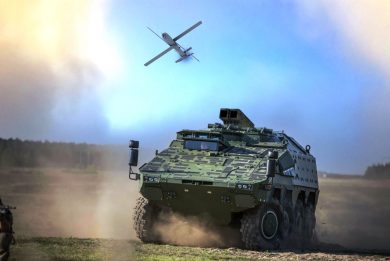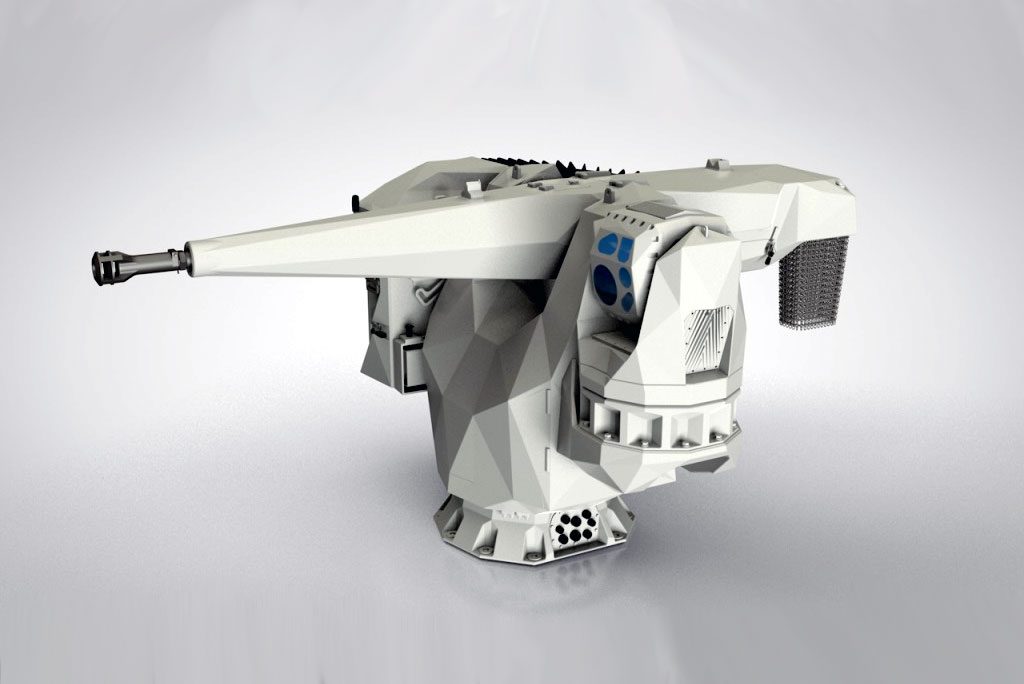
Rheinmetall: SeaSnake close to production
Rheinmetall started its business in the naval medium calibre gun mounts field around 20 years ago, when a new threat appeared for western navies warships: the suicide attack against USS Cole, a US Navy guided missile destroyer, which took place on 12 October 2000 in Yemen’s Aden harbour led to a new requirement in terms of on-board artillery systems.
Medium calibre automatic cannons, remotely controlled in order to save manpower and reduce risks, and capable to deliver a heavy punch thanks to the type of ammunition and the high firing rate, were now required to counter such asymmetric threats.
“We at Rheinmetall were asked by the German Navy to develop in the shortest possible time a naval gun system of that type under the premise of using systems that have already been introduced, which we did putting together and adapting to the new role a cannon used until then in aviation, the BK27, and an aiming system derived from that in use on the Leopard 2 tank, giving birth to the Marine-Leicht-Geschütz 27, MLG 27 in short,” Olaf Mittelstädt, the company Key Account Manager for Naval Guns & System Technologies tells EDR On-Line. With its over 25 27×145 mm optimised rounds per second delivered on the target the MLG 27 was capable to keep the threat represented by fast boats carrying personnel armed with shoulder-launched rockets such as the RPG 7 at bay, destroying possible suicide boats as well as airborne threats like helicopters or drones. An improved version that provided higher accuracy and was fitted with a single-shot mode, in addition to controlled bursts, was developed for export purposes one decade later, becoming the MLG 27 NG, for New generation.
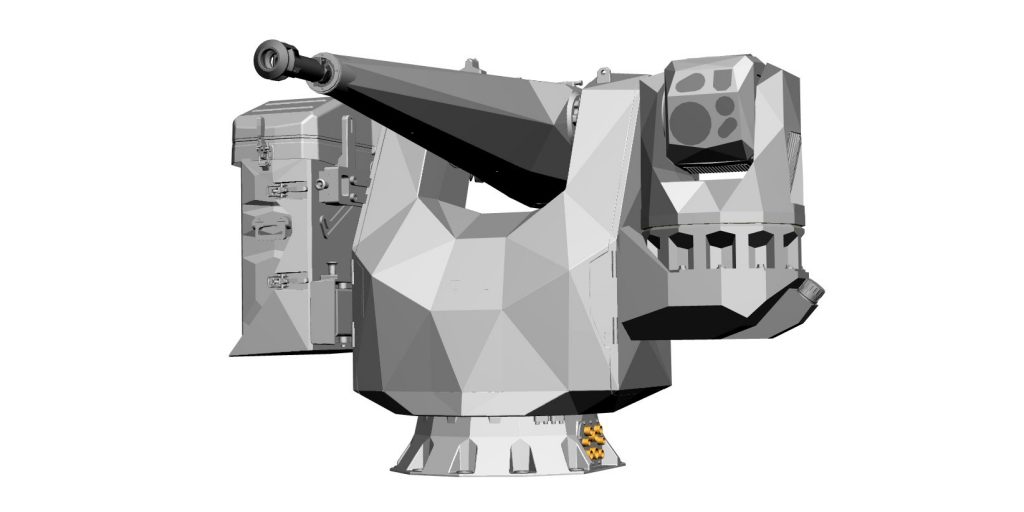
“Around three and a half years ago we decided to go for a wholly new system, in order to cope with new safety regulations imposed by the International Law on remotely controlled systems, something the older gun mounts could not fulfil,” Olaf Mittelstädt explains, “and this led to the SeaSnake family.” The 27 mm calibre choice made in the early 2000s was due to the in-house availability of a proven and reliable high rate of fire cannon, however its calibre was definitely not common among navies, which meant an increased logistic burden. Rheinmetall thus decided to design a gun mount based on a modular architecture, which allowed to host cannons ranging from 20 to 30 mm calibres. The German group had various solutions available, starting from the smaller calibre the KAE 20 firing 20×128 mm ammunition, the modernised version of the already mentioned BK27, and the KCE30 revolver cannon firing 30×173 mm rounds, among which ABM (AirBurst Munition) ones. Should the customer decide to change its medium calibre naval artillery, it will be sufficient to replace the gun cradle and the ammunition feed, and to add the right software containing new ballistic tables to the fire control system, beside obviously changing the cannon, to get the system ready. This means that all other technical features are the same, the exception being of course weight and dimensions as they are influenced by the type of gun installed. The SeaSnake is a remotely controlled weapon mount with the man in the loop, which is stabilised and ensures a training range of ± 170°, elevation range being –25°/+60°, the negative data being key for close-in protection, angular speed being 90°/s while acceleration is over 120°/s2.
The stabilised optronic suite is located on the left side of the mount and includes tree day cameras and one thermal imager. The three daylight cameras are equipped each with one zoom and one fixed optic providing different Fields of View (FoV): camera n.1 is the narrow FoV sensor, with 1.4° and 2.8° respectively, the mid one is camera 2, with 6.67° and 13.34° FoVs, and finally the wide view is provided by camera 3, with 16° and 32° FoVs respectively for the zoom and the fixed optic. The daylight CMOS sensor is 2,064×1,544 pixels, providing high-resolution images. As for the Saphir cooled thermal sensor, this works in the medium wave IR, 3-5 µm, the detector matrix having a dimension of 1,024×768 pixels, providing an XGA quality image, its zoom allowing to shift from a 1.4° to a 6.67° FoV. Company data give recognition, detection, identification(R/D/I) ranges against a warship respectively of 20-25 km, 15-20 km and 7-8 km in daytime.
To provide ranging data to the FCS two Laser RangeFinders (LRF) are available, foremost for redundancy; for shorter distances and higher accuracy a diode laser working on the 1.55 µm frequency with 25 Hz pulse rate is available, range being over 10 km, while for longer distances a diode pumped erbium laser is used, operating in the 1,535 nm frequency with a 10 Hz pulse rate, providing a range of over 40 km.
As said the SeaSnake can presently be fitted with three different guns, rate of fire, weights and dimensions being summarised in the table. It is to note that the MLG 27 with 90 rounds had a mass of 815 kg, the SeaSnake27 weighing only 574 kg with 225 rounds, which means that the mount weight without ammunition was reduced by over 40%. “This was possible thanks to the use of carbon fibre in most of the mount structure,” Mr. Mittelstädt explains. Another key upgrade is the adoption of touch-screens for the console, which allows intuitive designation and re-designation.
The key advantage provided by the 30 mm is the ABM capability, the rounds providing a variety of effects depending on how the fuse is programmed, the KCE30/ABM being able to programme the single round. It is probably due to this that the launch customer, a country “from a different continent,” as stated by Olaf Mittelstädt, chose the SeaSnake30. That said, to reduce the number of variables Rheinmetall started testing its new mount with the well-known 27 mm cannon, in what is known as SeaSnake 27. Firing trials ashore have been carried out successfully, the system having not yet been tested at sea. For the time being the German Navy will maintain the 27 mm calibre, Rheinmetall looking forward to start negotiations next winter for the mounts that will be fitted to the MehrzweckKampfSchiff 180 (MKS180), the new multipurpose warship currently under design. “Germany should become our second customer for the SeaSnake,” Mr. Mittelstädt states, adding that “a number of future German programmes include the desire for ABM.” This might lead in the future to exploit the modularity of the system opting for replacing the 27 mm cannon with the bigger calibre one.
With one customer bagged and the national customer ready to discuss the contract Rheinmetall is looking forward completing SeaSnake sea trials and starting production in 2021. According to Mr. Mittelstädt time to delivery is 24 months from contract.
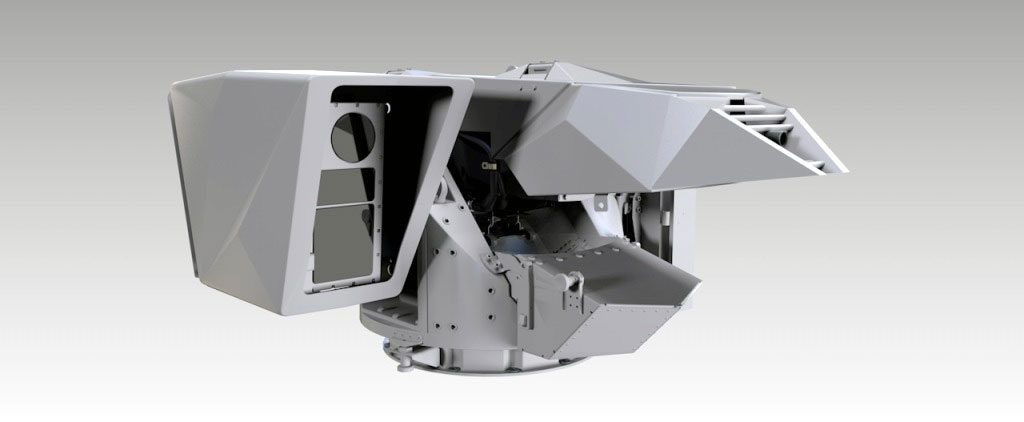
Coming to the smaller elements of the SeaSnake family, these were developed considering customers requirements for close perimeter defence, i.e. gangway protection. The mounts leverage the company experience in the land RCWS domain, and not surprisingly they are able to freely cover the full 360° azimuth arc. While the medium calibre mount is a single one, here we find two different mounts. The lighter one, the SeaSnake7.62, can be armed with the Heckler & Koch MG-5A1 or the FN-MAG 7.62×51 mm machine guns, but it can also accept 5.56×45 mm light MGs such as the MG4 and the M-249. Without weapon and ammunition it weighs 78 kg. This data includes the Flex-Eye sensor suite, installed on the right side, which is fitted with the Saphir/UC 5.9 uncooled thermal imager operating in the 8-12 µm band featuring a 640×480 pixels array. Narrow FoV is 5.9° while wide FoV is 25.3°. As for daytime, two cameras are available, with a 2,064×1,544 CMOS array, the first one with a 5.9° FoV while the second has a 25.3° FoV. Day and night R/D/I ranges declared by the company are respectively 7.6/2.8/1.5 km and 12.6/5.3/2.7 km. The laser rangefinder is similar to the short range one adopted in the medium calibre optronic package.
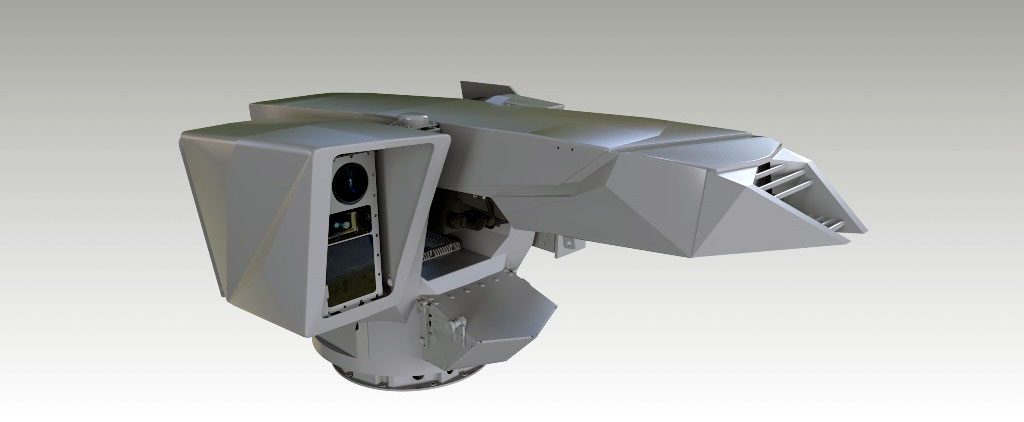
The Flex-Eye is used also in the heavier SeaSnake12.7, which weighs 136 kg without weapon and ammunition. Designed to host the 12.7×99 mm M2-Browning heavy machine gun, it can also accept the H&K 40 mm automatic grenade launcher, as well as the MG-5A1 machine gun. Both mounts have the same angular speed and acceleration, respectively 120°/s and 120°/s2, while elevation arcs are different: the lighter mount can reach –15° in depression while maximum elevation is 85°, while the heavier one covers a –20°/+60° arc. “We worked on those mounts for over one year, and we are about to have the first working prototype, that should become ready in late 2020 in our Bremen facility,” Olaf Mittelstädt tells us, adding that beside Germany the new systems have already raised the interest of many international customers.
Images courtesy Rheinmetall

